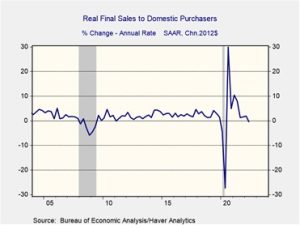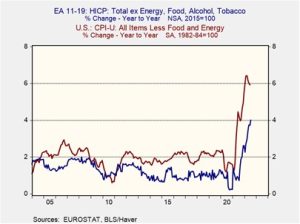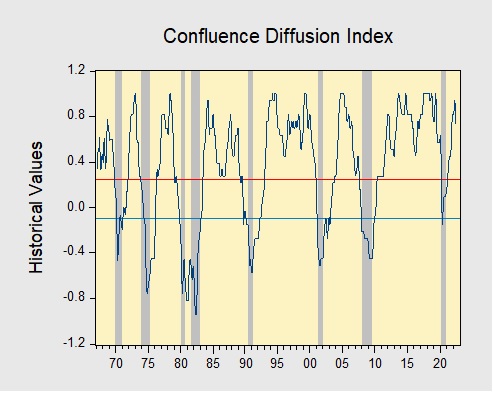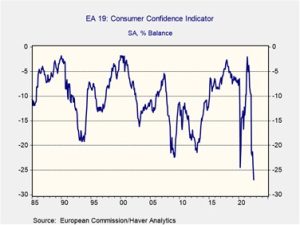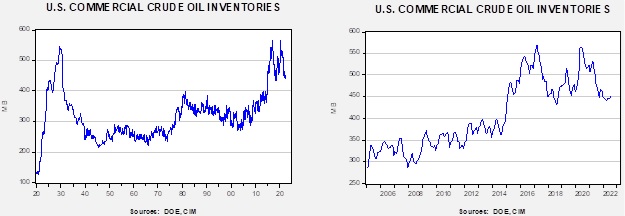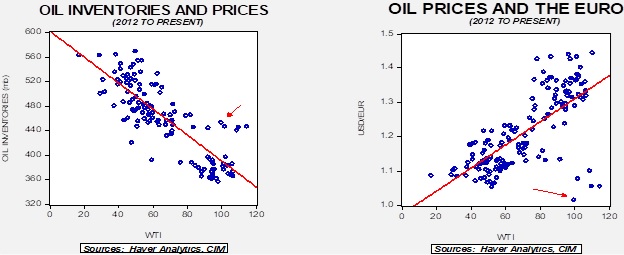by Patrick Fearon-Hernandez, CFA, and Thomas Wash
[Posted: 9:30 AM EDT] | PDF
Our Comment today opens with an update on the Russia-Ukraine war, where Russia continues to struggle with insufficient troop levels to make more significant territorial gains or to better defend against Ukraine’s counteroffensive in the south of the country. We next review a wide range of other international and U.S. developments with the potential to affect the financial markets today, with a particular emphasis on U.S. House Speaker Pelosi’s visit to Taiwan and China’s risky saber-rattling in response to it.
Russia-Ukraine: As Ukrainian forces ramp up their counteroffensive against the occupied southern city of Kherson, the Russians continue to shift troops there from the areas they occupy in Ukraine’s northeastern Donbas region. However, the Russians’ effort to reinforce Kherson may deprive them of the combat power they need to make further gains in the Donbas. The shift may also tempt the Ukrainians to launch a separate counteroffensive against the weakened Russian defenders in the Donbas. Meanwhile, the Russians continue to launch missile strikes across a wide swath of Ukrainian territory.
- The Russian military’s need to shift troops from one battlefield to the other illustrates its continuing shortfall in troops. In further evidence of that, U.S. and British military officials said that the Russian mercenary force known as the Wagner Group has been pulling troops out of Africa and redeploying them as regular Russian army units in Ukraine.
- Separately, imagery and other analysis increasingly suggest that the Russian military was responsible for an explosion that killed more than 50 Ukrainian prisoners of war at a Russian-occupied prison over the weekend. The Russian government had suggested that the Ukrainian military used precision rockets and artillery provided by the West to kill the POWs and prevent defections, but it now appears that the Russians staged the explosion and killed the POWs in yet another Russian violation of the Geneva Convention.
- On the economic front, the Ukrainian infrastructure minister warned that the country’s grain exports will take a long time to ramp up, despite yesterday’s first successful shipment from Odessa since the war began. The warning means Ukrainian supplies won’t quickly help alleviate the evolving global food crisis.
United States-Taiwan-China: It now appears that House Speaker Pelosi intends to carry out her controversial visit to Taiwan today and tomorrow, despite strong but unspecified Chinese warnings not to do so and President Biden’s misgivings about the trip. At this point, it’s not clear whether China’s warnings amount to anything more than posturing and bluster. However, given that the country is much more powerful than when a House speaker last visited the island in 1997, it’s impossible to rule out a risky show of force that could lead to miscalculation and potential conflict. That possibility is weighing on risk assets so far this morning.
- In what is probably part of China’s response, this morning, Chinese fighter aircraft have buzzed the maritime boundary between the mainland and Taiwan.
- On social media, we’ve also seen video of tanks patrolling a beach in China’s southern Xiamen province, opposite Taiwan. Of course, there seems to be little reason for Chinese tanks to be patrolling their own beaches (and disrupting tourists playing in the surf). Most likely, the move aims to drive home the idea of the Chinese military attacking Taiwan’s beaches.
- The People’s Liberation Army has put its Southern Theater Command on high alert and launched a series of military exercises in the South China Sea set to last until Saturday evening. That makes sense, given that the Southern Theater Command has responsibility for the area off China’s southeast coast where Pelosi’s plane would likely travel enroute from Malaysia to Taiwan. However, other than the tanks on the beach in Xiamen and reports of closed airspace around Fujian, we have seen no indication of any change in alert status for the Eastern Theater Command, which sits opposite Taiwan and would have key responsibility for any action against the island.
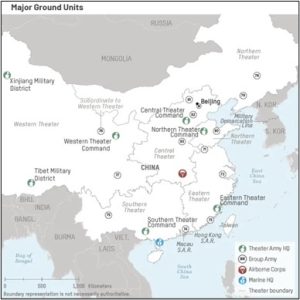
Source: U.S. Department of Defense
Japan: Continuing its rebound since mid-July, the yen has now appreciated to a two-month high of about 131.00 per dollar. The rebound reflects factors such as the recent retreat in U.S. bond yields and calculations that the Bank of Japan could abandon its yield curve control policy as other major central banks accelerate their interest-rate hikes to fight inflation. The move also appears to reflect some safe-haven buying amid geopolitical tensions and global recession fears, as well as short-covering by major investors.
Bulgaria: President Radev has called a snap election for October 2 and appointed Galab Donev, a former labor minister, to lead a caretaker government until a new administration is formed. The new election (the country’s fourth in the last two years) comes after the June collapse of the government run by Kiril Petkov, who came into office promising to fight the country’s rampant corruption, and who took an unusually strong line against Russia following the invasion of Ukraine.
- Petkov’s government lost a vote of confidence after one of the parties in the fragile four-party coalition abruptly pulled the plug. Afterwards, no other political group was able to secure a majority to govern.
- Observers now fear that the snap election could produce another fractured parliament, potentially undermining the European Union’s support for Ukraine in the war.
Global Cryptocurrencies: The Securities and Exchange Commission has charged 11 people for a $300-million cryptocurrency pyramid scheme in which they used promoters to convince millions of investors worldwide to recruit others into the program. Besides reflecting increased enforcement efforts by national authorities, the news is another black eye for the industry and will likely buttress calls for increased regulation.
U.S. War on Terror: President Biden announced that a U.S. airstrike in Kabul, Afghanistan, killed Al Qaeda leader Ayman al Zawahiri, a founding member of the movement and one of the key strategists behind its international campaign of terror that culminated in the September 11 attacks. The strike was the U.S.’s first known counterterrorism operation in Afghanistan since it withdrew its forces last summer. The attack shows that the U.S. retains the capability of striking terrorists in Afghanistan despite not having a permanent presence there.
U.S. Bond Market: For the first time in this cycle, the yield on the three-month Treasury bill briefly rose above the yield on the 10-year note yesterday. While the 2-year/10-year yield curve has been inverted for some time, Fed researchers consider the 3-month/10-year to be the better indicator of an impending recession. The development will help keep investor concerns alive concerning a recession in the U.S. sometime over the next year or so.
U.S. Antitrust Policy: The trial over the Justice Department’s effort to block a merger of major publishers has started. The lawsuit, in which the DOJ is attempting to stop Penguin Random House’s planned acquisition of rival publisher Simon & Schuster, is expected to signal how successful the government will be in preventing industry consolidation and preserving market competition in the coming years.




